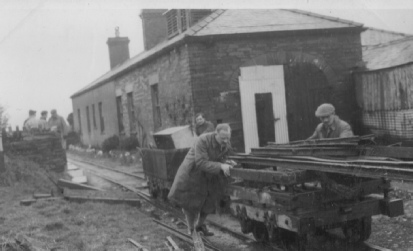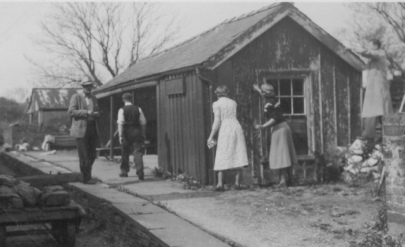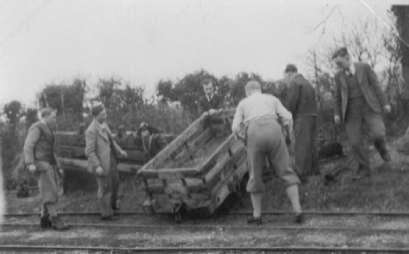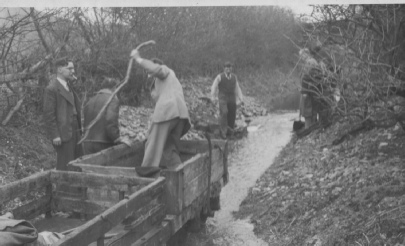

Founded 1953
Talyllyn Railway
When Tom Rolt and his fellow preservationists met at the Imperial Hotel Birmingham on October 11 1950, in a bid to save the ailing Talyllyn Railway, little did they know the chain of events that they were about to set in motion. That meeting created the embryo for the birth of a whole new industry in Britain, an industry which would gather momentum during the next fifty years and create a phenomenon unparalleled anywhere in the world. From fifteen thousand passengers and traffic receipts of £695 in 1951-its first year of operation- the railway preservation industry has grown to encompass more than one hundred operating railways and sixty steam centres, which together attract nearly eight million visitors a year and produce a combined turnover of around £43m.
Carving out its own piece of railway history because of the Birmingham meeting, the Talyllyn history goes back to the 1860’s when the plan for a railway to move stone from the slate quarries at Bryn Eglwys was hatched. The Talyllyn was different from other quarry lines as it was designed to operate with steam from day one, whereas other systems were gravity, rope worked or used horses to haul wagons. Construction of the eight mile line from Tywyn Wharf started in 1864 under the guidance of James Spooner, brother of the Ffestiniog Railway Engineer Charles, but it was hardly a major engineering feat, with 2ft 3ins gauge, a maximum of 1-in-60 gradient, 7 bridges and a 3 arch viaduct. It had been intended initially as a private railway, but a decision was made to operate it as a passenger-carrying line, and so an Act of Parliament was sought and passed by the time the track had been laid to Abergynolwyn.
At the opening in December 1866, the passenger coaches were operated locked because of tight bridge clearances-something the Board of Trade was not totally happy with. All station platforms were on the north side of the line, so the south side of the spartan workers coaches had no lettering. After years of profitability, the TR suffered when it was hit by a general decline in the slate industry, and in 1911, the quarry and railway were bought by prominent landowner and MP Sir Henry Hayden Jones, who wanted the line to continue for the duration of his life time. The writing was on the wall after locomotive Tal-y-llyn was withdrawn needing major repairs, leaving Dolgoch to soldier on. If that wasn’t bad enough, the quarry closed in 1947 and when Sir Henry died in June 1950, the line faced its biggest crisis. Services on the TR, 2 trains in each direction, terminated on October 6 the same year.
The Management kept a summer service running after Sir Henry’s death, a record 5235 passengers were carried that year. As the only share holders were his widow and daughter, they were advised to seek an abandonment order and sell the assets for scrap. It seemed as though the end was nigh. In the normal course of events, that’s what would have happened had it not been for the persistence of Tom Rolt. Rolt had written to the Birmingham Post, as had others, raising concerns over the future of the TR with the aim of prompting a meeting of like minded people intent on not only on saving the line, but running it. It was new and uncharted ground, full of pitfalls, but the meeting was attended by as many as 70, doubtless boosted by the Post front page story. The meeting which was attended by the Railway’s General Manager, Edward Thomas, was told that the track needed renewing, the locos needed major repairs and that the line lost money.
Facing the impossible, but undaunted and seeing the potential, Rolt said he hoped there would be sufficient interest from those in the room to form a working committee, leading to the acquisition of the line, its locos and rolling stock, along with a supporting society to keep it running. Backing Rolt were Bill Trinder, Patrick Whitehouse and Pat Garland, who was an accountant by profession. He also had experience of liquidating companies and felt such expertise might just be needed! Despite the sceptics, the first meeting of a committee was held on October 23, at which the name The Talyllyn Railway Preservation Society was adopted, even though the intentions were to carry on running it rather than to preserve it.
The next stage was for the Committee to negotiate with the Executors of Sir Henry’s estate, and by February 1951, all shares owned by Lady Jones had been transferred to a new non-profit making holding company. The value of the TR was £l350 and it was agreed that should the venture fail, the same sum would be returned to Lady Jones.
In the intervening months, three sub committees were created to look after finance, engineering and publicity in preparation for re-opening the line for the 1951 season. With funds short, support was forthcoming from the members of the two leading railway societies, the RCTS and the Stephenson Locomotive Society, and many individuals who had seen advertisements in the Railway Magazine joined the Society for a £l annual subscription.
An appeal for volunteers produced working parties by March 1951, and at that point, enthusiast John Slater, later to become editor of The RM, began volunteering. Fifty years on, he was still doing so! Tom Rolt agreed to act as General Manager, replacing Sir Henry’s right hand man Edward Thomas, while David Curwen took on the role of Engineer.
By May, the TRPS had recruited 644 members. Donations of gifts in kind included two former Corris Railway locos-Hughes Engine Company 0-4-OST No 3 and Kerr Stuart 0-4-2ST No. 4 which were named Sir Haydn and Edward Thomas respectively.
On May 14, history was made. The line re-opened as far as Rhydyronen to become Britain’s first preserved railway. Regular trains to Abergymolwyn started on June 4, and by the end of the season, 15628 passengers had been carried almost twice what Tom Rolt had thought was possible a year or so earlier.
1952 brought three firsts: The Railway Inspectorate took an interest, a catering operation started and an area society was formed. Passenger figures for 1952 topped 22000.
As early as 1957, the TR began looking towards celebrating the line’s Centenary in 1965 by opening an extension to Nant Gwernol, where a new station was to be built. However, it was not until May 22 1976 that this target was achieved. It was also in 1957 that the Talyllyn first accepted letters for conveyance by it’s trains, and acquired it’s first diesel; a Ruston Hornsby 0-4-0 from a Nuneanton quarry.
Contact with Lt. Col. Woodhouse who opened channels for a team from the Territorial Army to be based at the TR for it’s annual 2 week training period in 1953 where that undertook track work. Again, this proved to be another first as many heritage lines have subsequently benefited from TA exercises during preservation’s 50 year history.
The Talyllyn got a rather rude awakening as to the pitfalls of running a volunteer line when on the night of November 4 1957, a serious landslip occurred near Dolgoch after heavy rain. The railway had an initial warning of movement some three years earlier but had not appreciated the potential seriousness, such was the level of inexperience in such matters in those pioneering days.
Losing forty foot of embankment due to a blocked culvert, volunteers toiled through the winter to build a reinforced concrete wall which took until February before 200 tonnes of ballast from the local quarry had been tipped behind it. But it was all good experience for the volunteers and would stand them in good stead for the challenges of the future.
Here a a few photos from the REC’s photo archive dated 1951 showing building activity. They are a bit grainy but are the enhanced as best we can. A number of early REC members were active in this movement.
For more information visit the Talyllyn website www.talyllyn.co.uk



